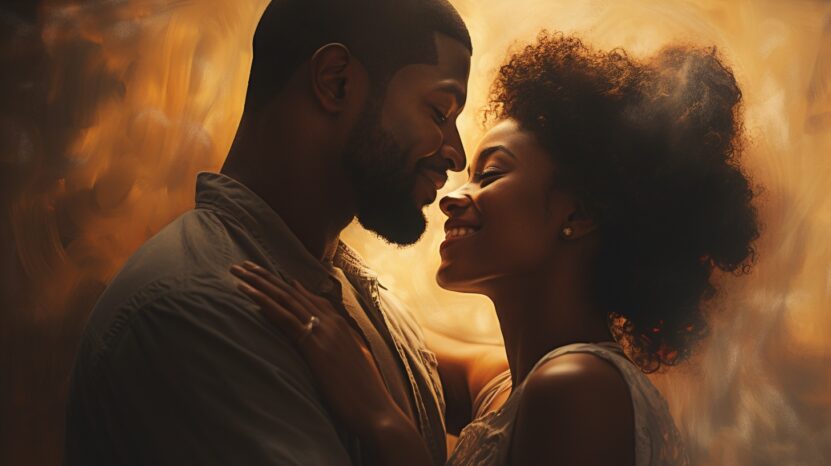The greatest love tales don’t just tell of two people falling – they help others fall too. By creating characters anyone can relate to in their messy complexities, an audience finds themselves invested.
This window into emotions we all know lets viewers truly feel with the characters. And feeling with them is what pulls people deep into the narrative, rooting with their whole selves for love to blossom.
The finest stories understand love in all its colors – from new connections’ flutter to intimacy’s slow unfolding. They portray the ups others cheer, and downs some may mirror in their own lives, with honesty.
At its best, a story breathes life through its characters in a way that reminds our shared humanity. In their joy and sorrow, we find a reminder love can lift each other through whatever challenges we all face on life’s journey.
1. Characters

For a love story to really connect with people, the characters have to seem like real people you might meet. They need fully fleshed-out personalities, backgrounds and what drives each person day to day.
It’s through showing these characters as complete people with all their traits, strengths, and weaknesses that the story shares its meaning. And the more a story takes the time to explore what makes each person unique on the inside and outside, the more readers relate to the relationships portrayed – good and bad, just like real life.
A tale that really understands its characters makes you feel like you’re learning about friends. Even if they’re fictional, the best stories draw you in by making the people in it feel authentic.
2. Conflict and Resolution

Trouble is what moves the story along and keeps people interested. Stress can come from a lot of places too, like pressure from others, internal battles, what society thinks, or just not seeing eye to eye. The good stories show how disagreements test the relationship and help each person grow wiser along the way.
The solution shouldn’t seem rushed or come out of nowhere. It’s not just a happy ending, but demonstrating all the learning that happened from start to finish. From facing obstacles comes new strength and shared understanding to carry both main characters forward, feeling at peace with how it all turned out.
3. Setting and Atmosphere
Beyond pretty scenery though, the best stories use location to mirror what’s happening inside the characters. Their feelings and state of mind make each scene more vivid, adding impact for whoever watches or reads along.
The setting means more than just a place – it’s using description, imagery and pacing to fully transport the audience into the emotional world alongside the lead characters. Descriptions submerge the reader or viewer in warmth, building anticipation, joy, or sorrow, drawing them deeper into the story’s heart.
4. Themes and Universal Appeal

Good love stories will address subjects we all grapple with. Things like sacrifice, loyalty, our ability to choose for ourselves and balancing what society says versus our hearts can give tales extra layers.
By touching on themes familiar to all, these types of tales become about more than romance alone – they provide a looking glass into what it means to be human.
6. Blending Romance with Other Genres

A compelling affection plot often finds harmony with different story forms. Mixing in humor, adventure, mystery or even elements of fantasy and science fiction keeps folks engaged while love plays out. By bringing in other modes, the tale offers a richer experience beyond love as the sole focus.
Added mini-plots matter a whole lot for fleshing out affection arcs. They can show new sides or give supporting characters their due too, lending perspective to the central relationship.
Well-crafted other stories deepen the leading love story, creating dimension and complication while also assisting character growth. Subplots round out what makes these kinds of narratives resonate.
7. Storytelling and Pacing

Good storytelling draws others in by crafting a tale that captivates, keeping folks engaged in the characters and voyage together.
This includes a natural flow where each new piece adds to what came before, driving the story higher and higher til its peak and endpoint.
8. Dialogue and Chemistry Between Characters
In an affection narrative, what’s said amounts to more than just a trade of lines – through talk comes insight into what makes each person tick, what their hearts truly hope for, and soft spots too. Real, thoughtful dialogue amplifies the feels, letting interactions resonate like daily life.
Chemistry is that untouchable something sparking the relationship’s believability. Not just physical pull but deeper meets of mind and soul, and this intangible bond unfolds clearly in how characters connect in evolving ways.
9. Narrative Structure and Conclusion
A sublime love story carries a form guiding the audience clearly. Generally, this starts by setting the scene, piles on challenges and changes building suspense, hits a high point where it all comes to a head, and ends with resolving threads in a way that feels proper.
However, the tale wraps up – upbeat, somber, or somewhere in between – it should provide a sense of closure. The finish line should come off as natural to the characters’ road together, staying with viewers or readers even after done. It’s these conclusions that color a narrative’s whole impression, making their execution crucial.
Final Thoughts
Love stories are timeless for a reason – they tap into our shared humanity. At their best, they showcase the complexity of relationships in all their beauty and messiness. They remind us of connection’s power to resonate across divisiveness.
By developing characters we recognize as multidimensional beings, crafting narratives with emotional depth and stakes that matter, these tales reflect life’s deepest hopes, fears and what it means to walk alongside another, through both ease and struggle.
An effective love story stays with us because it holds a mirror to our own experiences – the transformative highs of intimacy, the growth that comes from challenge, the small moments comprising a journey shared.
I’m Anastasia, and I’ve just wrapped up my postgraduate studies in literature. I absolutely love writing books. It’s my way of weaving new worlds and breathing life into the characters that keep me up at night. Literature isn’t just a field of study for me; it’s a canvas where I paint with words. Through my writing, I hope to connect with others who share my love for storytelling and to contribute something meaningful to the literary world.








